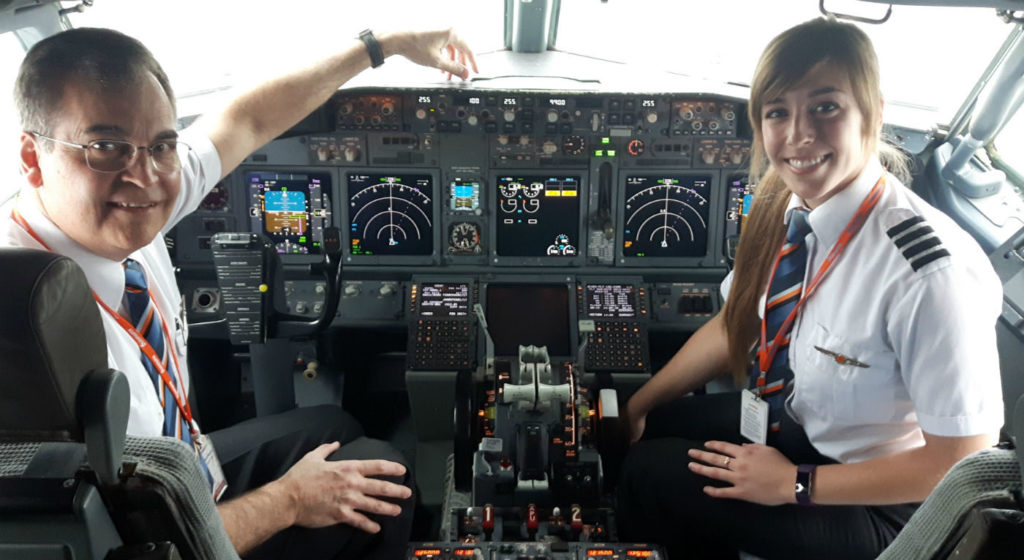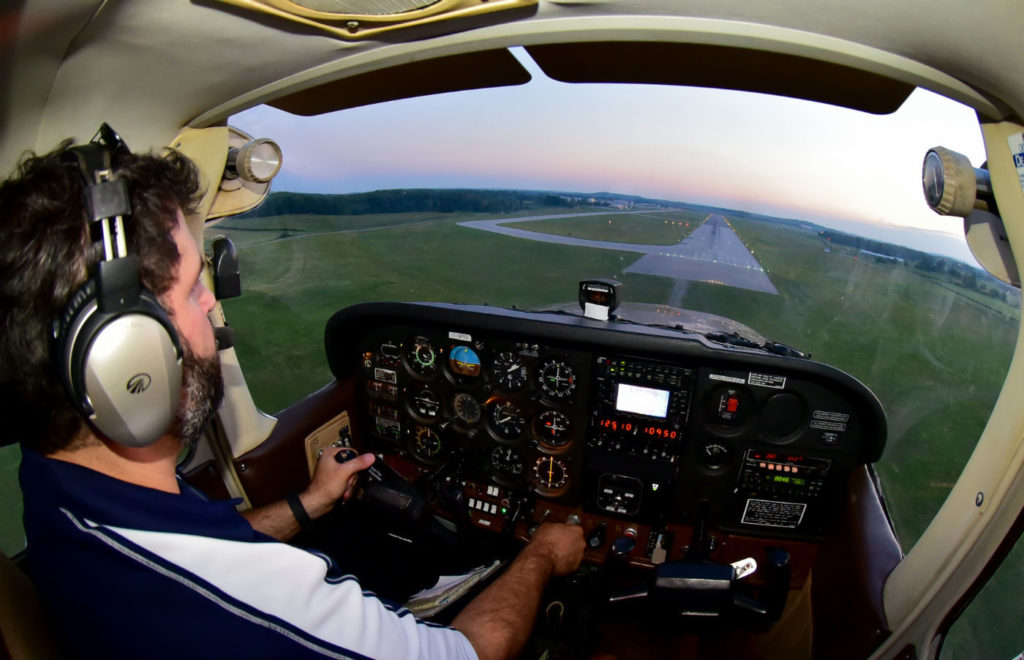Estimated reading time 5 minutes, 26 seconds.
Hiring and retaining pilots is a perennial challenge for operators of all categories.

It’s a job market arguably like no other. Newcomers, often saddled with huge flight training debt, are nevertheless almost willing to pay for the privilege of stick time. At the other end, veteran commercial pilots with thousands of flight time hours fight to stay at the controls after they’re supposed to have retired.
As the increasing demand for air travel puts pressure on operators of all sizes, the Air Transport Association of Canada (ATAC) organized a symposium on pilot recruitment at its recent annual spring meeting in Ottawa.
Mike Doiron, president of his eponymous consultancy, summarized a Canadian Council for Aviation & Aerospace study showing that a potential pilot shortage was now “very real.”
He said several trends indicate possible “downstream” issues that need to be collectively addressed by industry now.
The former ATAC chairman cited rolling 20-year global forecasts by Airbus and Boeing, which indicate that more than 500,000 new pilots will be needed. That falls in line with Federal Aviation Administration projections for the United States.
Worldwide, the annual average growth in the pilot population was expected to be in the range of four to 4.5 per cent, but Doiron noted that the International Air Transport Association last October projected overall industry growth at about 3.7 per cent if the market stabilizes. That’s a forecast he said underscores the need for more pilots.
That could drop to around 2.7 per cent if countries become more protectionist about air services but “really get out of hand real quick” in the other direction if air services are liberalized. “We could see, literally, a tripling of those numbers,” which would step up pressures on the job market.
Doiron noted that the Canadian air transportation sector is forecast to grow by an annual average of two per cent through to at least 2025.

“Unless there’s some dramatic change within our borders, that number is probably going to be the starting point.”
The outlook includes a need for 7,300 pilots, a situation he said would put Canadian operators at “a distinct disadvantage” without major systemic change. “If we look at the commercial pilot licences which have been issued since 1991 . . . in the last five years or so, there’s a slight increase. . . . But if you spread it out over the last 15 years, it’s effectively a flat line” of about 680 annually.
Moreover, while the domestic to foreign ratio of Canadian-issued licences had been 81:19 in the early 1990s, it had shifted to 55:45 last year. He warned that foreign students usually don’t stay in Canada to work, meaning that output of Canadian pilots has stagnated.
It was an “incredibly scary” scenario in which the demand for new hires for expansion and replacement could mean a shortfall of 6,000 by 2036.
Doiron said part of the solution could be getting to prospective pilots and other aviation professionals as early as middle school.
“Once someone hits Grade 12 or is graduating from high school, if they haven’t decided on an aviation career, there’s a distinct possibility it’s probably too late,” he said.
Flight training costs that typically range from $60,000 to $90,000 for a job which might pay only $20,000 to start were another major challenge which too often scares prospective pilots away.
“We need to get some serious discussion on how . . . we make it easier for people to come in the door. . . . There’s a lot more people who would be really interested in aviation if they could afford it.”
He said that while this should be an industry-driven initiative, governments had to be involved. Various provinces offer support to flight schools, but their role is increasingly hampered by the fact that the instructor pool is shrinking, particularly at senior levels, as commercial operators hire them away.









Ive been hearing the same story for the last 30 years…. never seems to be a problem, just the usual pilots looking for a job and cant find one.
This is a very well written article and I feel it hits the nail on the head, in almost all respects. What incentive is there for a young pilot to spend close to $100,000.00 and not be guaranteed a decent wage to live on and even raise a young family. But the operators don’t want to pay decent wage because they know that many young pilots are so hungry to get their shot at a major airline, and it is because they ARE that hungry that helps keep the wages low, which in the long run hurts all young pilots. Some say it all comes down to just how badly do you want it?
How much are you willing to sacrifice in the beginning to (hopefully) finally get your chance to fly the BIG jets?
Personally, I sacrificed 8 years of my life flying in the Arctic! No family, no friends; you end up living two completely different lives. And yes, I finally I got my chance to fly the BIG jets, and I flew them for 29 years and retired in 2013 to make way for a young pilot waiting for his big chance.
Very good report. To stay in business, flight schools have had to open up to foreign contracts because of the downturn of domestic students. The report could have gone further; compounding the expense of training for a flying career, is the lack of reasonable job prospects following getting that CPL/ IFR rating etc…one has met the standard qualifications as far as Transport Canada is concerned. But, no one wants you unless you want to be a swampy, ramp rat for minimum wage until you have 500, 750, or 1000hrs. How do you get those hours? Instruct? At a school that has declining enrolment…vicious circle for a new pilot looking for that first job.
I’ve wanted to be a pilot since I was 14. The problem for me is exactly what they say in the article, money. I was told early on that it was a huge investment and a painfully slow salary curve. I never had the means to really go for it and now I’m 35 with the means to start albeit slowly but I have a young family now.
I know for me I could not risk putting that much into something knowing that if I cannot afford to continue, I’m effectively stalled before I can even make money. At the earliest one had to put in roughly 25,000 just to get to a point where you can make money. Who would give you a loan for the kind of money required.
For now I dream
If I may ask, what job/business have you been doing until now? Is it aviation related?
My son has had the dream since he was 2 and has had his pilots license since he was 18. We have supported his bill at well over $100,000. He fought the vicious flight school battle, with no students to gain hours, and poor wages. He slugged away at 2 and 3 jobs at a time to make ends meet. Now, at 29, he got a break flying medivac only to find out the company he flies for lost the contract…It is one of the toughest fields I have ever seen to break into. And yes, the wages at start up make it impossible for someone who doesn’t have financial support from others. We are getting impatient waiting for the supposed shortage…then maybe he can really get flying and out of debt.
Sorry to say, do not hold your breath. I have flown everything up to 450 passengers. I just took a salary CUT of a factor of 4 to come back to Canada. Made 4 times more money at the last job, took a pay cut to 1/4 to come back to precious Canada and freeze my ass off flying an ancient plane here. No way I want my kid doing the same. You would have to be an idiot, hopelessly in love with flight, to consider something so financially stupid.
The only shortage is of people smart enough to fly and stupid enough to do it. I have been stupid 30 years.
At my flying school, there are at least 30 new graduates and a handful of instructors with over 500 hours waiting for a real flying jobs. Shortage ???
Young people who live at home ( there’s quite a few out there now) and are interested in a career in aviation should check out Selkirk College and their Aviation Program.
I was just looking at their site, out of curiosity, my brother’s friend went there years and years ago. They have a lot of good things to offer. As well, a Bursary program that financially strapped students can apply for. And, who knows, being an accredited college, a young person might be able to apply for student loans. They had some info about that.
And depending on how their grades were, they can also try looking up where to apply for scholarships and grants. They’re out there, you never know until you try.
Hopefully this helps someone.
I am beginning to think there is a flight school lobby funding these pilot shortage stories.